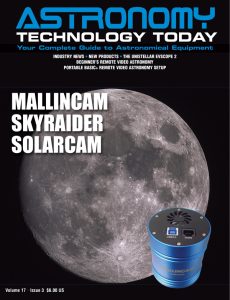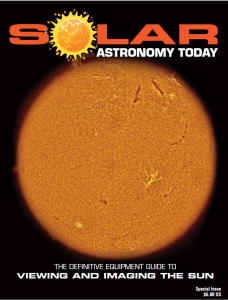The OGMA AP26 astrophotography cameras are an offering from a new company headquartered in the US in Raleigh, North Carolina.
 As the OGMA team notes, “OGMA is the name of a yellow subgiant star orbited by a hot exoplanet. It’s also the brand name of carefully sourced astronomy equipment brought to you by amateur astronomers on a giant quest to make astronomy more affordable for everyone. Since our launch in 2022, we have been able to partner with well-established manufacturers to bring to market astronomy products with high-end specifications at a reasonable price under the OGMA brand. Currently, we are commercializing two cameras and a filter kit, and we are working hard to bring to market other excellent products at a reasonable price.”
As the OGMA team notes, “OGMA is the name of a yellow subgiant star orbited by a hot exoplanet. It’s also the brand name of carefully sourced astronomy equipment brought to you by amateur astronomers on a giant quest to make astronomy more affordable for everyone. Since our launch in 2022, we have been able to partner with well-established manufacturers to bring to market astronomy products with high-end specifications at a reasonable price under the OGMA brand. Currently, we are commercializing two cameras and a filter kit, and we are working hard to bring to market other excellent products at a reasonable price.”
The OGMA AP26 astrophotography camera models are offered in the AP26CC (Color) and AP26MC (Monochrome). These are 26MP cameras that use the Sony IMX571 back-illuminated APS-C sensor capable of producing images with high signal to noise ratio, zero amp-glow and excellent dynamic range.
As the OGMA team notes, “The cameras use an innovative cooling system to minimize dark current noises resulting in excellent image quality for low light applications. These are full-spectrum astrophotography cameras that utilize an anti-reflections (AR) window in front of the sensor, which gives you the freedom of choosing your own filters without worrying about the influence of a constant IR filter in front of the sensor.”
The OGMA AP26 astrophotography cameras offer the following features:
– Sensor: Sony IMX571 CMOS Sensor
– Resolution: 6224 x 4168
– Mega Pixels: 26MP
– Pixel Size: 3.76 μm (square pixels)
– Format: APS-C
– Amp-Glow: Zero Amp-Glow
– Data Interface: USB3.0/USB2.0
– USB Hub: 2 ports to share the USB connection
– DDR3 Buffer: 512MB (4Gbit) sufficient for reliable data transfer over USB3.0 (1Byte = 8bit)
– Full-well: 100Ke-
– Cooling: Up to 40°C below ambient
You can learn more ab out the OGMA AP26 astrophotography cameras here.

 And to make it easier for you to get the most extensive news, articles and reviews that are only available in the magazine pages of Astronomy Technology Today, we are offering a 1-year magazine subscription for only $6! Or, for an even better deal, we are offering 2 years for only $9. Click here to get these deals which only will be available for a very limited time. You can also check out a free sample issue here.
And to make it easier for you to get the most extensive news, articles and reviews that are only available in the magazine pages of Astronomy Technology Today, we are offering a 1-year magazine subscription for only $6! Or, for an even better deal, we are offering 2 years for only $9. Click here to get these deals which only will be available for a very limited time. You can also check out a free sample issue here.
The Sun is more active than it’s been in years and if that’s not enough, we have the Annular Solar Eclipse on October 14, 2023 and the Total Solar Eclipse on April 8, 2024! If you’d like to learn more about the technology behind solar observing, solar imaging and more, you can check out our free publication, “The Definitive Guide to Viewing and Imaging the Sun”. You don’t have to sign up or provide any information, simply click here and enjoy reading!

